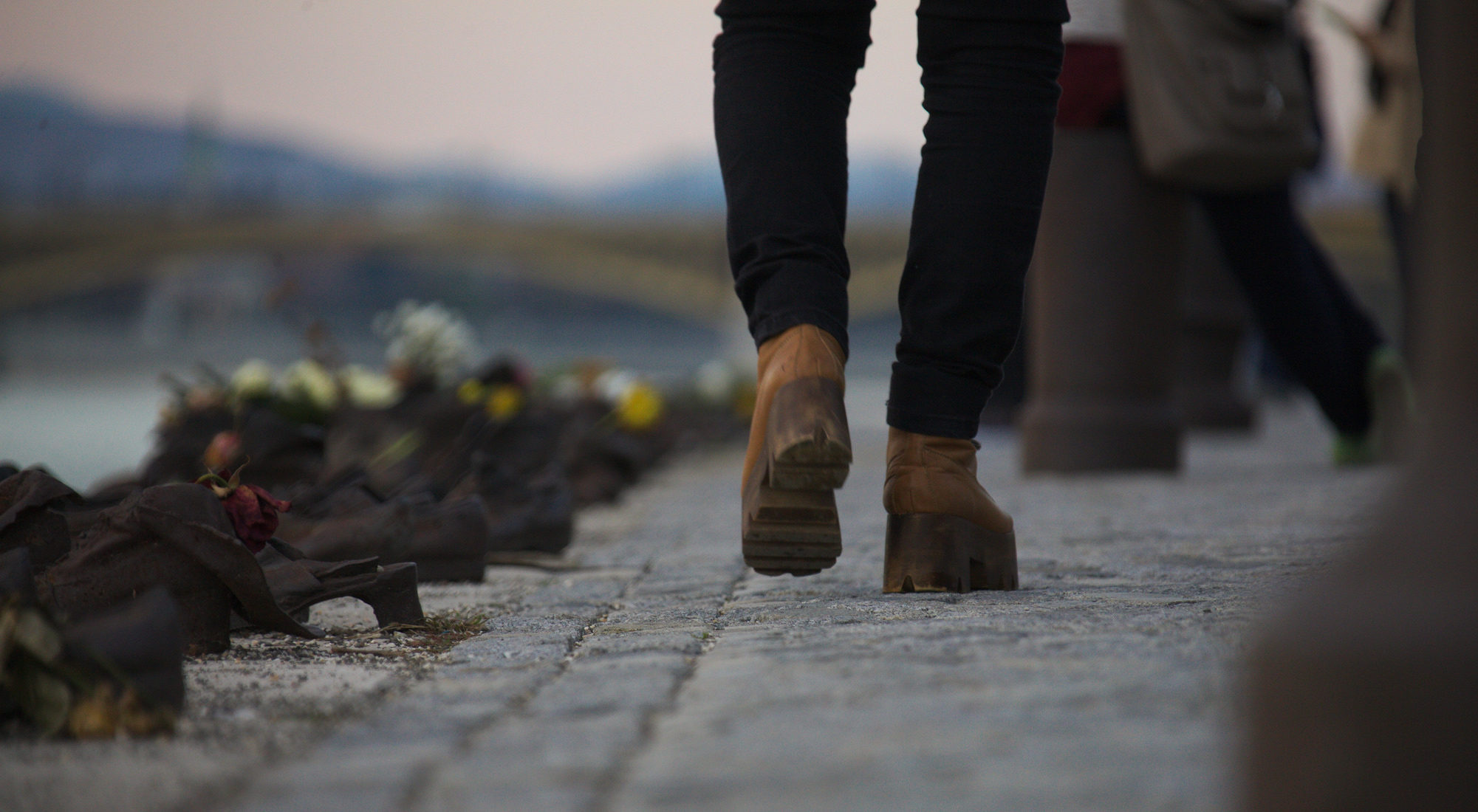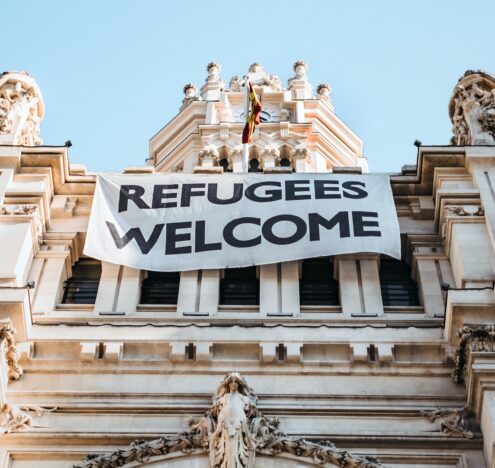In the wake of Charlottesville, the nation is in the throes of a debate over what to do with monuments and statuary memorializing the Confederate era. But, as I learned this summer, the United States isn’t the only country struggling with monuments and memory.
My daughter lives in Budapest, Hungary on a fellowship with a non-profit organization. Earlier this year, my wife and I took our two boys with us to visit their sister. Like any good tour guide, my daughter showed us the sights in the wonderful Central European City. And like any good European City, it had its share of statues and monuments dedicated to great kings, generals, notable citizens, and events in Hungary’s long history.
Perhaps the city’s most famous monument, though, isn’t a sculpture of a man on horseback, but a series of 60 pairs of bronze shoes strewn along the Danube River, which bisects the city. In World War II Arrow Cross militiamen, loyal to the anti-Semitic, pro-Nazi government at the time, lined up and shot some 3500 victims. Their bodies fell into the river where the sculptures now stand. In some cases, the militiamen told their victims to remove their shoes. In others, they tied their victims together, shot only one, and let the dead body pull the others into the river to drown. The plaque reads simply “To the memory of the victims shot into the Danube by Arrow Cross militiamen in 1944–45. Erected 16 April 2005.” — in Hungarian, English and Hebrew.
On a hill overlooking the city is another, the Liberty Monument. Originally known as the Liberation Monument in honor of Soviet soldiers who liberated the city in 1945, it was renamed the Liberty monument after the fall of communism. The statue of a soldier with a Soviet flag was then moved to so-called “Memento Park.”
Memento Park is the place where, in 1991 after the last Soviet troops had departed Hungary, the city council moved most of the communist monuments to serve as a reminder of the era. The park contains a collection of statues, among them Marx and Engles, named “A Sentence about Tyranny.” Stalin’s statue in the city has been replaced by a monument to the 1956 uprising against the Soviets. One of the last remaining communist monuments in the city stands in Liberty Square, in the city’s center, only steps away from a statue of Ronald Reagan. Reagan never visited the city, but was honored for his role in ending the Cold War.
Far from seeking to erase their fascist and communist history, the Hungarians have sought to remember it in a different way. In 2002, the city opened the House of Terror. Rather than the scary Six Flags-type ride the name evokes, this museum commemorates the real terror of both the Arrow Cross and communist eras in a building used by the secret police in both. The museum displays artifacts detailing the horrors inflicted by the regimes. On the way out, a wall contains photos and pictures not of the victims, but of the perpetrators, some of which are still alive. All as if to say, this is not just history, some of this terror is still out there.
But some of Hungary’s monumental issues are still being wrestled with, just as we continue to wrestle with ours. In July of 2014, in the middle of the night, a “Memorial to the Victims of the German Invasion” was erected in a central square by Prime Minister Victor Orban’s government. The statue depicts an eagle, Germany, attacking the Archangel Gabriel, Hungary, in 1944, the year of the invasion. Many view the monument as an effort by Orban to whitewash the role of the Arrow Cross regime, installed by Germany in 1944, in the genocide that occurred in Hungary. To these citizens, the statue portrays all of Hungary as an unwilling victim of German aggression, glossing over the collaboration of Hungarians in a horrific crime.
In an effort to contest the statue’s narrative, a spontaneous “counter-memorial” has been erected right next to it. Small stones with the names of Holocaust victims have been placed in front of the monument. More powerfully, small personal items and photos of families destroyed during the war have been placed in a row facing the monument. Standing in defiance. Shoes, glasses, and suitcases are accompanied by letters in Hungarian and English telling tales of lives lived and lost. Both the statue and the counter-memorial commemorate the same events, but the stories they tell are very different. The differences between the two narratives have implications for the people alive today, even if they were born after the war.
In a very narrow sense, history is a list of names, dates, places, and events. Sometimes new facts come to light which change our view. Joe Paterno was a revered football coach at Penn State and a statue was erected in his honor. When we learned that he had turned a blind eye to a series of monstrous crimes, his statue came down. His record as a coach didn’t change but our view of him as a person worthy of respect and honor did.
In a broader sense, history isn’t just the who, what, where, and when but the why. Why did events play out the way they did? Why did people make the choices they did? There are no definitive answers to these questions, and some of the questions proposed have changed over time. Not because new facts have been revealed but because our understanding of what we do know has changed. We study history not just to increase our knowledge of the past, but to inform our present and guide our future.
The history of our nation, or any nation, is a story we tell ourselves about ourselves. It shapes who we are, how we want to be seen, and what we wish to learn so we avoid repeating the mistakes we have made. Who we choose to honor and revile, what we choose to put in a town square and what in a museum are indeed choices that say something about us, not just then but now.
Hungarians, perhaps owing to their unique language, have a very strong sense of national identity. They remember both the glories of their past and the horrors. So long under the thumb of brutal repression, the official story was told and other narratives were forbidden. Now, free to govern themselves, Hungarians are changing the narrative. The struggle for how that plays out, they feel strongly, will speak not just for their past and present, but for their future as well.
Rob Levinson is a retired Lt. Col in the U.S. Air Force with over 20 years of service as an intelligence officer. He is a graduate of the Air Force Academy and served in Latin America, the Middle East, and South Korea as an intelligence officer, foreign area officer, commander and politico-military affairs officer.





















